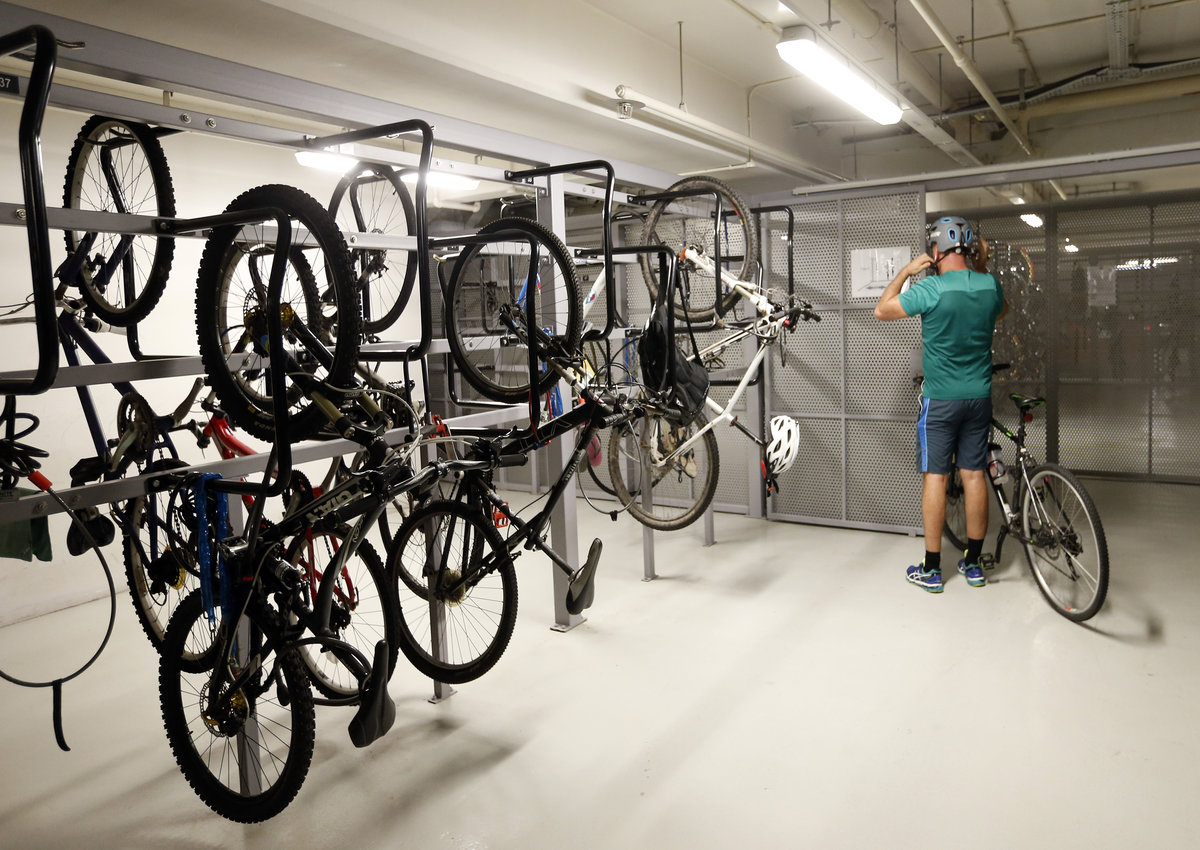Developers will be given incentives to provide facilities such as bicycle parking, showers and locker rooms in their new buildings, as part of a new government plan to encourage people to cycle.
They may not have to pay for the floor area occupied by these facilities, as the Urban Redevelopment Authority (URA) has said it is prepared to grant gross floor area (GFA) exemptions for such facilities.
A URA spokesman told The Straits Times such exemptions will complement the Walking and Cycling Plan, adding that “the details are still being studied”.
Under the plan announced last week, cycling and walking facilities will be incorporated when buildings are designed from the get-go, starting from July.
This is part of an overall effort to make cycling more attractive for the first and last mile of trips.
On Monday, the Ministry of Transport said in Parliament that it will soon require developers to follow standards for bicycle parking, similar to existing requirements for minimum car parking spaces.
While developers have welcomed the moves as a step towards a “car-lite” Singapore, they have also asked for concessions.
Evia Real Estate managing director Vincent Ong said that the Walking and Cycling Plan could impose difficulties on developers, who already deal with tight space constraints.
For instance, under URA rules, up to 40 per cent of a development’s site area would have to be reserved for greenery, leaving little space for anything else, said Mr Ong.
“The construction costs might not be significant, but what costs money are supporting services (such as ramps and staircases) and how you fit all these facilities into the development,” said Mr Ong.
Mr Terence Seah, divisional director of architecture firm Benoy, points out that many of these facilities – such as bicycle parking – would be built on the ground level, so developers could lose “highly profitable space”.
“If the Government gives some form of incentivisation, if these extra facilities could be GFA-exempt, it would be a more equitable way to encourage developers to take this on board,” said Mr Seah.
For a start, the Walking and Cycling Plan will apply to commercial developments, such as shopping complexes, offices, business parks and schools, but ST understands that it will eventually apply to residential developments too.
Concerns about costs aside, experts feel that the plan could trigger a “proliferation of cycling” in the city and inspire new architecture.
The streetscape would change gradually, with more ramps and dedicated paths for cyclists and other mobility devices, said Mr Charles Barguirdjian, studio director of architecture firm Atkins Global.
National University of Singapore associate professor Cheah Kok Ming feels that there could be an increase in kiosks or counters within buildings, where cyclists could do simple repairs or pump their tyres.
But Prof Cheah, who is from the department of architecture, also said that developments have to be well-connected to a developed cycling or walking network, if the Government’s plan to encourage these modes of transport is to bear fruit. “A building could have bicycle parking and all the facilities, but there is no way a cyclist can get into the building safely if its surrounding is not well-designed,” he said.
dansonc@sph.com.sg
xueqiang@sph.com.sg

This article was first published on May 11, 2016.
Get a copy of The Straits Times or go to straitstimes.com for more stories.






